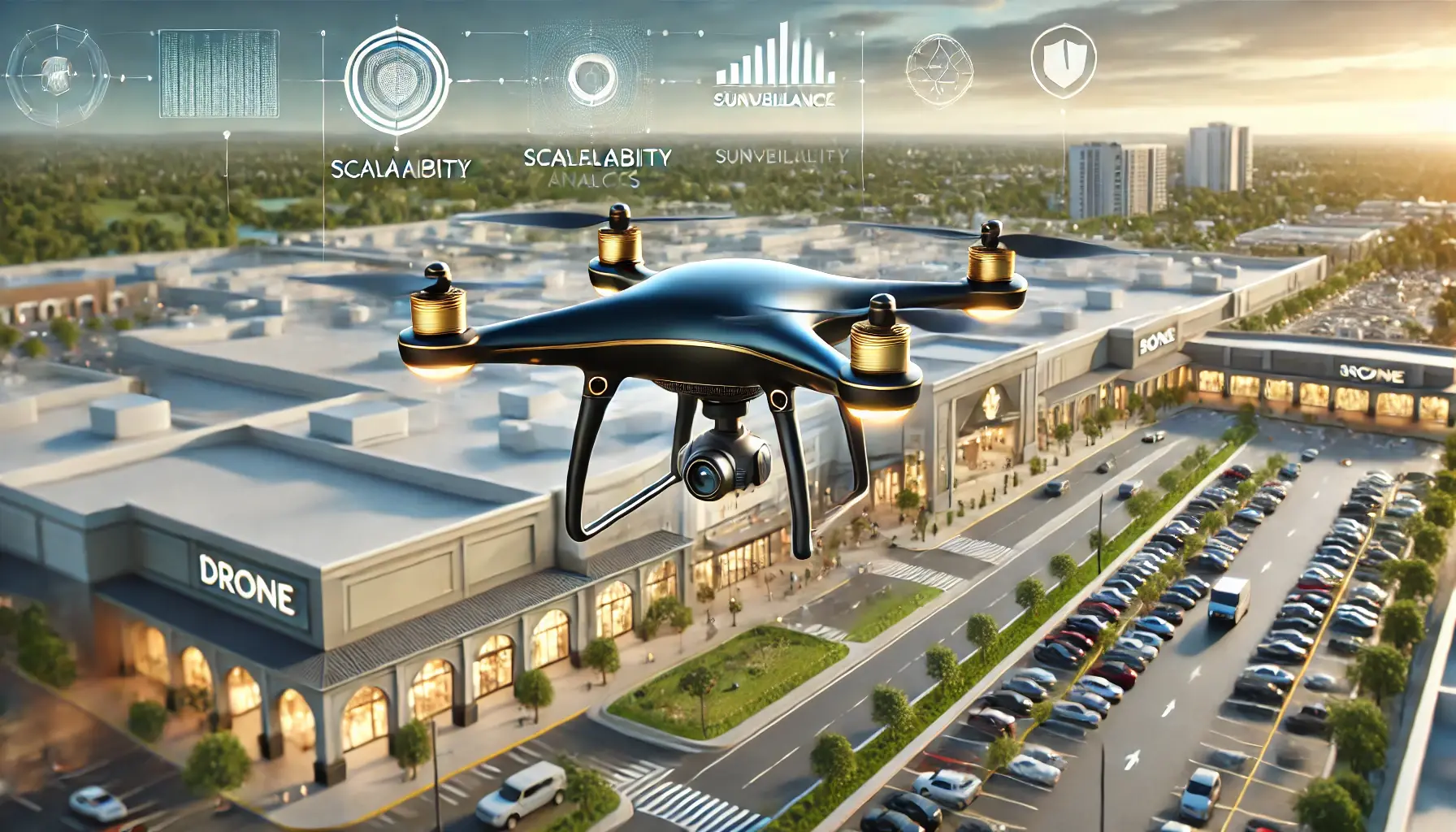Retail complexes, from bustling shopping malls to sprawling outlet centers, face unique security challenges. With vast spaces to monitor, frequent foot traffic, and areas prone to theft or vandalism, these properties require innovative solutions to ensure safety and operational efficiency. Drone security has emerged as a powerful tool, but selecting the right provider is crucial. Here’s what retail property managers should consider when choosing a drone security provider. Need help setting up aerial drone security for your retail space?
1. Affordability Without Compromising Quality
The Challenge: Retail complexes often operate on tight budgets, balancing security expenses with profit margins. High-cost security solutions may deter adoption, but sacrificing quality can lead to gaps in protection.
What to Look For:
-
Transparent Pricing: Choose providers that offer clear pricing structures without hidden fees.
-
Cost Savings: Evaluate how the solution reduces long-term expenses, such as minimizing staffing needs or preventing theft.
-
Return on Investment (ROI): Look for metrics or case studies showing how the provider’s solutions have reduced security incidents or saved costs.
Key Question: How does your pricing model balance affordability and quality, and what cost savings can we expect?
2. Scalability for Complex Properties
The Challenge: Retail properties vary widely in size and layout. Security solutions need to scale efficiently to cover large parking lots, multiple entry points, and diverse store arrangements.
What to Look For:
-
Flexible Deployment: Ensure the provider’s drones can adapt to properties of varying sizes and configurations.
-
Multi-Drone Systems: For larger complexes, look for providers offering multiple drones that work collaboratively.
-
Expandable Solutions: The system should grow with your property’s needs, whether adding drones or expanding monitoring zones.
Key Question: Can your solution scale to fit the unique size and layout of our property?
3. Deterrent Features for Visible Security
The Challenge: Visible security measures are essential for deterring theft, vandalism, and other incidents. Traditional methods like static cameras or plainclothes guards often lack the visibility needed to discourage criminal activity.
What to Look For:
-
Visible Drones: Choose providers whose drones act as a visible security presence, patrolling in public view.
-
AI Analytics: Look for features that detect suspicious behavior, such as loitering or unusual activity.
-
Real-Time Alerts: Ensure the system provides instant notifications to security teams, enabling quick responses.
Key Question: How do your drones create a visible deterrent effect, and what features help identify threats proactively?
4. Parking Lot Monitoring and Nighttime Security
The Challenge: Parking lots are common hotspots for vehicle break-ins, altercations, and accidents. Monitoring these areas effectively, especially at night, is a persistent challenge.
What to Look For:
-
Night Vision and Thermal Imaging: Drones equipped with these features are critical for nighttime surveillance.
-
Wide Area Coverage: Ensure the drones can monitor large parking lots comprehensively.
-
Incident Documentation: Look for systems that record incidents, providing video evidence for liability or insurance claims.
Key Question: How effective are your drones at monitoring parking lots and providing security during nighttime hours?
5. Compliance and Privacy Considerations
The Challenge: Retail properties must ensure that their security measures comply with privacy regulations and do not disrupt the shopping experience.
What to Look For:
-
Geofencing Capabilities: Drones should operate only within designated areas, avoiding private or restricted zones.
-
Encrypted Data: Ensure all surveillance footage is securely stored and transmitted.
-
Transparent Policies: Providers should offer clear guidelines on how data is used and stored.
Key Question: How do your drones ensure compliance with privacy laws while maintaining effective surveillance?
Key Features to Evaluate in a Drone Security Provider
| Feature | Importance |
|---|---|
| High-Resolution Cameras | Provides clear visuals for effective monitoring. |
| AI-Powered Analytics | Detects anomalies and suspicious behavior. |
| Thermal Imaging | Ensures effective nighttime surveillance. |
| Real-Time Alerts | Enhances response times for incidents. |
| Automated Patrols | Ensures consistent monitoring without manual intervention. |
| Scalability | Adapts to the size and needs of the property. |
Questions to Ask Potential Providers
-
How scalable is your solution for properties of varying sizes?
-
What privacy safeguards are in place to ensure compliance with regulations?
-
How do your drones perform in low-light or nighttime conditions?
-
What cost savings can we expect compared to traditional security methods?
-
How does your system integrate with existing security infrastructure?
-
What training and support services do you provide for our team?
Frequently Asked Questions (FAQs)
Q: Are drones cost-effective for smaller retail properties? A: Yes, drones are scalable and can be tailored to fit the size and budget of any retail property, making them a cost-effective solution.
Q: Can drones operate effectively at night? A: Absolutely. Drones equipped with night vision and thermal imaging excel in nighttime surveillance, ensuring continuous security.
Q: How do drones integrate with existing security systems? A: Modern drones connect seamlessly with CCTV networks, alarms, and access control systems, enhancing overall security.
Q: Are drones intrusive to the shopping experience? A: No, drones offer a non-intrusive security presence, enhancing safety without disrupting the shopping experience.
Q: How do drones help deter theft and vandalism? A: Visible drone patrols and AI analytics create a strong deterrent effect, while real-time monitoring allows for quick responses to incidents.
.png)
.png)
.png)

.png)
.png)

.png)
.png)
.png)
.png)
